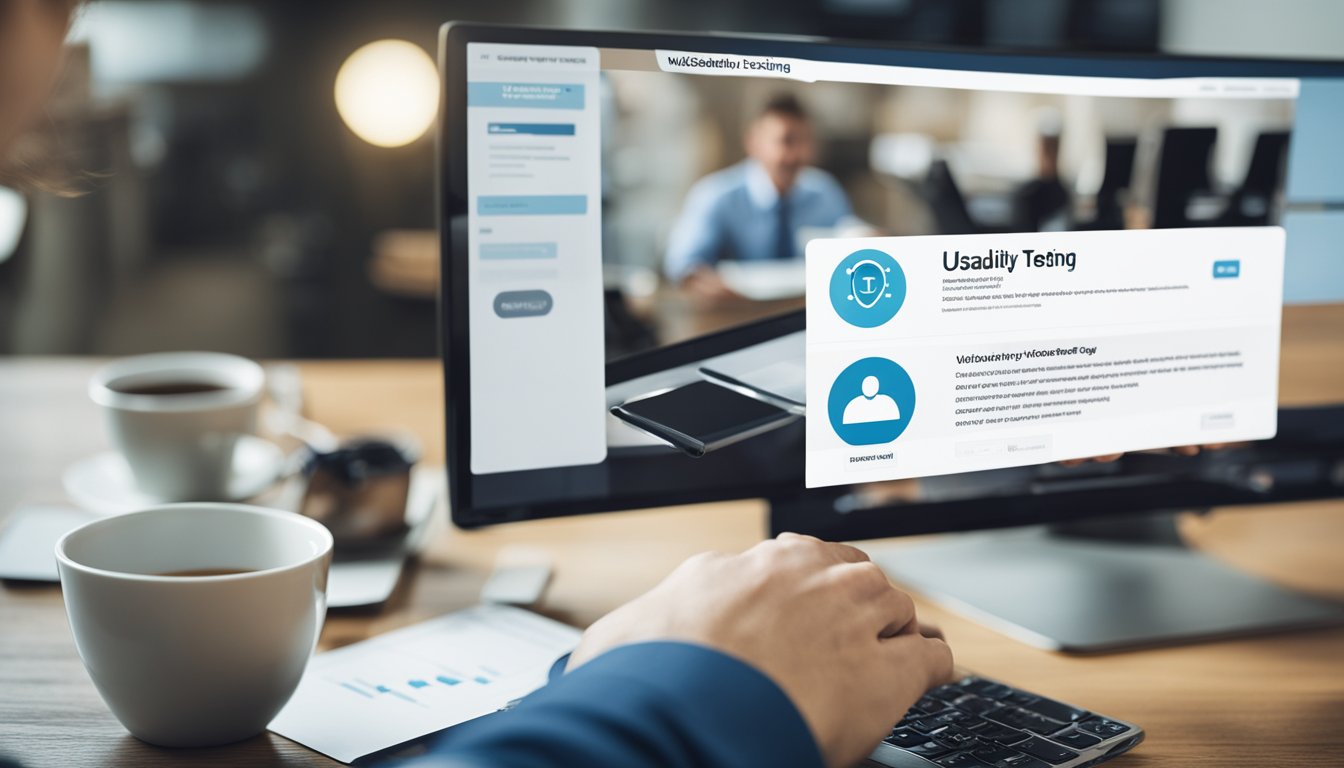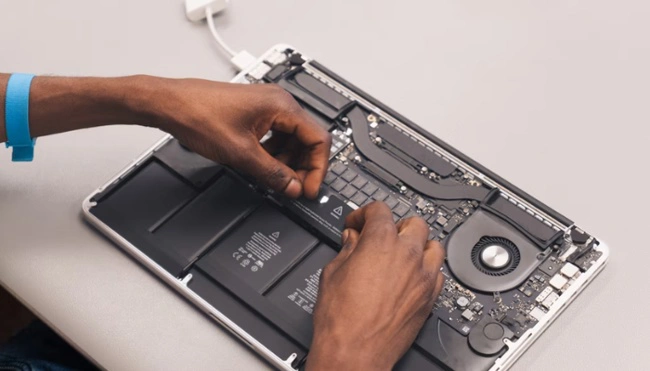Usability Testing 10 Reasons Your Business Needs It
As a business owner, you want your customers to have the best experience possible when using your product or service. Usability testing is an essential tool that can help you achieve this goal. It allows you to evaluate how easy it is for users to interact with your product and identify any areas that need improvement. In this article, I will discuss 10 reasons why your business needs usability testing and how it can benefit you.

Usability testing is a process that involves observing users as they interact with your product or service. By doing so, you can identify any pain points or areas of confusion that may be hindering their experience. This feedback can then be used to make improvements that will enhance the overall user experience. Whether you are developing a new product or updating an existing one, usability testing can help you ensure that it is user-friendly and meets the needs of your target audience.
In this article, I will explain why usability testing is essential for businesses of all sizes and industries. From improving user satisfaction to increasing conversions, there are many benefits to conducting usability testing. By the end of this article, you will have a better understanding of how usability testing can help your business succeed.
Key Takeaways
- Usability testing is crucial for businesses to ensure a positive user experience.
- Planning and implementing usability testing can help identify areas of improvement.
- Analyzing and interpreting usability testing results can lead to increased user satisfaction and conversions.
The Importance of Usability Testing

As a business owner, I know the importance of providing a seamless user experience for my customers. That's why I believe that usability testing is an essential part of the product development process. In this section, I'll explain what usability testing is and the benefits it can bring to your business.
Understanding Usability Testing
Usability testing is a process of evaluating a digital product's user experience by testing it with real users. The goal of usability testing is to identify usability issues and gather insights and feedback from the target audience. Usability testing is typically conducted by a product team during the product design and development process.
Benefits of Usability Testing
Usability testing can provide numerous benefits to a business. Here are some of the most significant advantages of usability testing:
- Identify usability issues: Usability testing can help identify usability issues that can affect the user experience. By testing the product with real users, businesses can identify potential pain points and areas for improvement.
- Improve product design: Usability testing can help improve the product design by providing insights into how the target audience interacts with the product. This feedback can be used to make design changes that better meet the customer's needs.
- Increase ROI: By improving the user experience, businesses can increase customer satisfaction, which can lead to increased sales and customer loyalty.
- Protect brand reputation: A poor user experience can damage a business's brand reputation. Usability testing can help prevent this by identifying and addressing usability issues before they become a problem.
- Meet customer needs: Usability testing can help businesses understand the needs and pain points of their target audience. This can be used to create products that better meet the customer's needs.
In conclusion, usability testing is an essential part of the product development process. By identifying usability issues and gathering insights and feedback from the target audience, businesses can improve the user experience, increase ROI, and protect their brand reputation.
Planning and Implementing Usability Testing

As a UX designer, I understand the importance of usability testing in improving the design of a product or service. Usability testing is a crucial step in the development process that helps identify design flaws, assumptions, and errors that hinder the user experience. In this section, I will discuss the planning and implementation of usability testing, including the types of usability testing, the usability testing process, and the recruitment and selection of participants.
Types of Usability Testing
There are two main types of usability testing: qualitative and quantitative. Qualitative usability testing is a method that involves observing participants as they interact with a product or service and collecting feedback through interviews or surveys. Quantitative usability testing, on the other hand, involves collecting numerical data to measure the effectiveness, efficiency, and desirability of a product or service.
The Usability Testing Process
The usability testing process involves several steps, including planning, designing the test, recruiting participants, conducting the test, and analyzing the results. As a UX designer, I follow the usability testing process to ensure that the objectives of the test are met, and the results are accurate and reliable.
Recruitment and Selection of Participants
Recruiting the right participants is crucial to the success of usability testing. To ensure that the test results are accurate and reliable, it is essential to recruit real users who match the target user demographics. The recruitment process should be cost-effective and efficient, and the sample size should be large enough to provide valuable insights into the user experience.
In selecting participants, it is crucial to consider the usability testing method, whether it is moderated or unmoderated, remote or in-person. The facilitator or moderator should be trained to ensure that the participants feel comfortable and can provide honest feedback. The usability testing process should be designed to include realistic activities that mimic the workflow of the product or service.
In conclusion, usability testing is a valuable tool for improving the design of a product or service. By following the usability testing process and recruiting the right participants, designers can gain valuable insights into the user experience and make informed design decisions. Whether it is qualitative or quantitative usability testing, the results can validate assumptions, identify errors, and provide validation for design decisions.
Analyzing and Interpreting Usability Testing Results

As a product designer, usability testing is a critical tool in the product development process. After conducting usability tests, it is important to analyze and interpret the results to gain insights into user behavior and identify usability issues. In this section, I will discuss how to interpret usability test results and use them to improve the design of the product or service.
Understanding Test Results
Usability testing provides valuable feedback on the effectiveness, efficiency, and desirability of a product. When examining test results, it is important to look beyond the numerical data and focus on the insights gained from user feedback. For example, if users are having difficulty completing a task, it is important to understand why. Is the task too complex, or is the user interface confusing? Identifying the root cause of usability issues is essential in making design decisions that will improve the user experience.
Reporting usability test results should be clear and actionable, highlighting the most important findings and recommendations. The report should include both qualitative and quantitative data, and should be presented in a way that is easy to understand for all members of the product team. Using tables, bullet points, and bold text can help to emphasize key points and make the report more readable.
Improving Your Product Based on Feedback
Usability testing provides a cost-effective way to validate design decisions and identify areas for improvement. Based on the feedback received from users, the product team can make informed decisions about which features to prioritize and how to improve the design of the product or service.
Usability testing can also have a positive impact on brand reputation and ROI. By addressing usability issues and incorporating user feedback, the product team can create a more user-friendly product that meets the needs of its target audience. This can lead to increased customer satisfaction, repeat business, and positive word-of-mouth recommendations.
In conclusion, usability testing is a critical component of the product design process. By analyzing and interpreting test results, the product team can gain valuable insights into user behavior and identify usability issues. Using this feedback to make design decisions can lead to a more effective, efficient, and desirable product that meets the needs of its target audience.
Frequently Asked Questions

What are the benefits of conducting usability testing for businesses?
Usability testing helps businesses identify potential issues with their products or services before they are released to the public. It also provides valuable insights into how customers interact with the product or service, allowing businesses to make informed decisions on how to improve the user experience. Additionally, usability testing can help reduce development costs by catching issues early in the design process.
What are the potential drawbacks of not conducting usability testing?
Without usability testing, businesses risk releasing a product or service that does not meet the needs or expectations of their customers. This can result in negative reviews, decreased customer satisfaction, and lost revenue. Furthermore, fixing issues after the product or service has been released can be costly and time-consuming.
How can usability testing improve the overall user experience?
Usability testing allows businesses to gain a better understanding of how customers interact with their product or service. This information can be used to make informed decisions on how to improve the user experience, such as simplifying the user interface or adding new features that better meet customer needs. By improving the overall user experience, businesses can increase customer satisfaction and loyalty.
What are some common methods used in usability testing?
There are several methods used in usability testing, including observation, surveys, and interviews. Observation involves watching users interact with the product or service and taking notes on their behavior. Surveys and interviews involve asking users specific questions about their experience with the product or service. Other methods include A/B testing, eye tracking, and heuristic evaluation.
What are the key metrics used to measure the success of usability testing?
The success of usability testing can be measured using a variety of metrics, including task completion rates, time on task, error rates, and user satisfaction. These metrics can help businesses identify areas for improvement and track progress over time.
How often should a business conduct usability testing?
The frequency of usability testing will depend on the product or service being tested and the needs of the business. However, it is generally recommended that usability testing be conducted throughout the design and development process, as well as after the product or service has been released to the public. This allows businesses to catch issues early on and make necessary improvements to the user experience.









